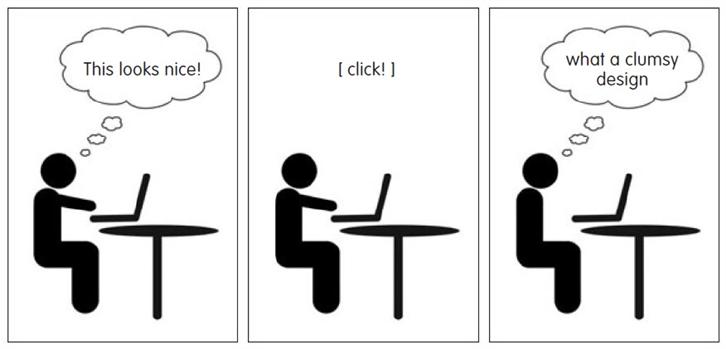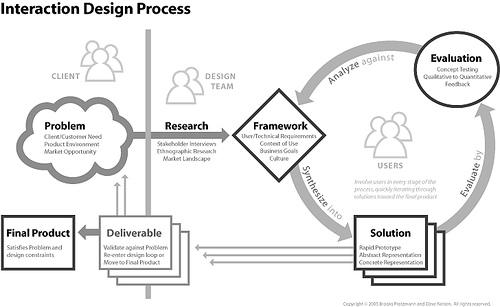
The overwhelming popularity of the Apple iPod or iPhone in recent years has reminded us how influential excellent UI designs can simplify our life and even determine the sales of products. Because the UI, or User Interface, is the first product impression for users when they start using a product, a poor UI design will only frustrate users who may put products aside after a few tries. Then, these cleverly or sophisticatedly designed features soon become useless decoration of products. This is because the effort that product designers put into product designs remains invisible to users, and they can only feel about product designs from UIs. So, the UXD, or user experience design, plays a crucial role to create a wonderful user experience.
What is “User Experience Design”?
Simply speaking, the core concept of UXD is a user-centered design, or the insightful results produced after user experience researchers observe or analyze uses of products. The UXD is more than just a sensitive imagination, and it is backed by logic and scientific research. Take the Apple iPhone for example; its smooth touch, intuitive control and hearty designs would not not possible without support of extensive research of user experience.
How to go about “User Experience Design”
The range and disciplines that the UXD involves are very broad, but the process can be generalized into the following steps:

(1) User Observation:
For all products, the key to the first step in the initial design phase is close observation. We must start from understanding the target users. We can do so through all kinds of scenario investigation techniques to observe the daily life experiences and behaviors of users, to discover and identify possible future business opportunities.
(2) Demand Analysis
Conduct deep analyses on the foreseeable business opportunities identified in the first step to conceive product or service ideas that can fly in the market. The purpose of design is not to create the products or services themselves, but to create product or service experiences. Only by truly grasping problems facing users and uncovering the underlying demands can we clarify what should be included or eliminated.
(3) Design:
A well-designed device will need to understand user behaviors, instead of the other way around. Putting yourself in one’s shoes – when designers think from users’ perspectives, then the products designed can better meet user needs. How designers can identify the shortest path to accomplish tasks, discover ways to smoothly control devices, and bring products into user scenarios are truly the important steps to create overall user experiences.
(4) Prototyping:
Initially, designers conduct easy and quick tests through prototyping to understand if the conceived designs can match up to users’ thoughts and expectations. The sooner you can convert the original inspirations into end products, the sooner you can conduct the tests to receive feedback and assess the feasibility of original ideas.
Paper Prototype study
(5) Test:
To know if users can easily use the products after they are finished, we rely on usability tests. There are lots user testing methods we can consider; focused interview, hands-on observations, or through testing tools such as eye trackers or facial expression recognizers etc. These tools can help us to accurately pinpoint what issues users encountered and determine users’ emotional reactions during tests to serve as references for further tune-ups.
Summary:
Consumers are offered more and more choices. They no longer settle for the right products; they desire products that can truly meet their needs. In the product development process, user centered designs can produce products that are easier to use. Most product developers choose to adopt the UI designs that users are most familiar with, as these kinds of designs will remind users of successful product experiences in the past. Then they can easily and quickly get a handle on the products, and these designs can largely reduce customer costs and increase product values.
Reference:
1.http://www.slideshare.net/lis186/user-experience-design-1363220?type=powerpoint
2. http://ucdchina.com/
3. http://uxdesign.smashingmagazine.com/
About the Author
Gamania Human Factors Design Center/Celine Lin
The UCD(User-Centered Design) method is applied in every team project to ensure quality and performance. Gamania is committed to promote and provide the best user experience in all of its products.
